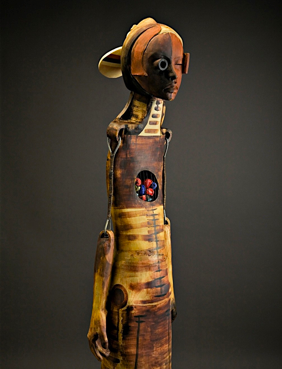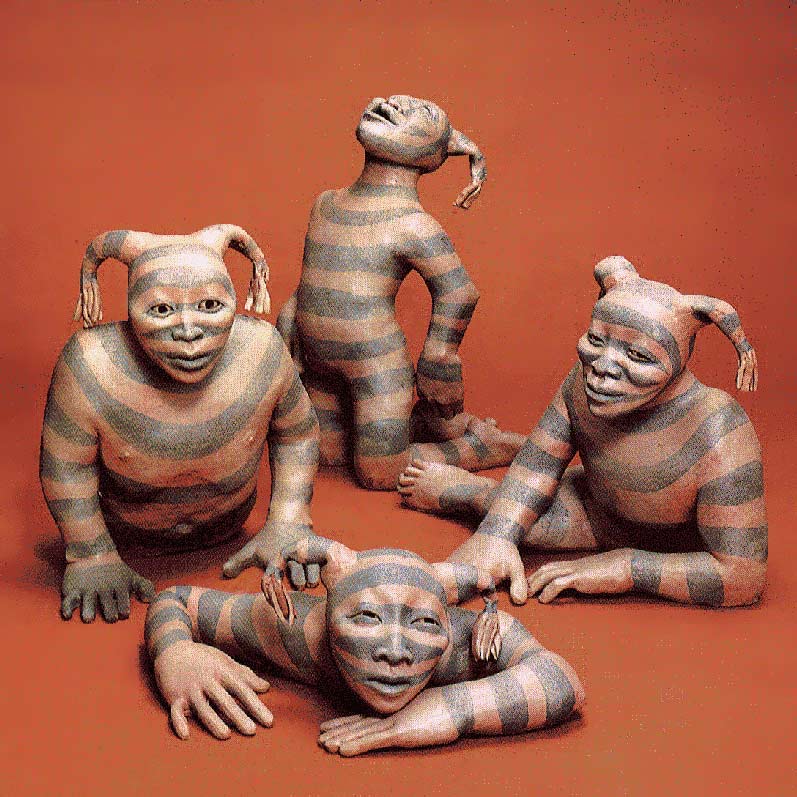Jonathan Sanchez
Date Jan 23 2013
A Discussion of Visual Culture Theory. All three writters agree that the basic premise of viusal culture theory is that there is a need to create a multi-disciplinary approach to education at large and art history in specific. Tavin makes the case that art history can benefit greatly from cultural studies (Tavin, 199) and has listed some thrity disciplines that he argues should be incorporated into the sphere of visual culture. Julie C. Van Camp in her critical look at the visual culture movement, seems to warn of the rise of a potential new dogma (Van Camp, 34). "Still further, the term "interdisciplinarity" can simply suggest ways of expanding our methodologies in a variety of disciplines without staking a claim that only particular notions of interdisciplinarity are acceptable" (Van Camp, 34). Van Camps mild endorsement of visual culture theory comes in the form of a question, "Can our understanding of visual culture be used to enchance our undertanding of what we traditionally termed or deemed as art?" (Vaan Camp, 34).
Tavin seems to burn with the fire of a zealot lighting a torch to the whole art academy and Eisner rests somewhere between Van Camp and Tavin, when he simply states, "Justification improves overall performance," (Eisner, 7). Pluralism pushes in one direction and standardized testing in another a pedullum swing that leaves art educators grasping.Perhaps the strongest points that all agree on are the following; art is no island, visual experiences are profound and far reaching, the everyday in the classroom breaks down the barrier of high art. Art is no island. In short transdisciplinary approaches inspired by visual culture theory, can only help to bring context and a socialogical component into the art classroom.
Visual experiences are profound and far reaching even if they happen in a football stadium.The "medium is the message," to see someone's name in lights is thrilling weather we know why or not (Mcluhan 1). It is that visual experiences reach us on a primal level like moths drawn to a flame. By saying that some experiences are high art and others not worth mentioning we close off a vast current of inspiration, and limit are realm of intellectual meandering. As Tavin states, "By inculcating students to existing cultural hierachies, the canon of high art is maintained as unproblematic," (Tavin, 197).
Finally, bringing the current and the everyday into the classroom will not only help students relate it will address issues of whose culture are we making? Are we to simply repeat what has been done as a kind of art mantra or are we as May said active change agents (May, 146).
Problems with a visual culture approach1. Visual culture does not seem to have an overarching or concrete quintessence all of the authors seem to allude to this as a point of confusion.
2. It is perhaps too far reaching it would be as if arguing, why do we need geology and biology why not talk about them as the same thing? We break things into categories in order to make sense of them.
3. How do we talk about art or visual culture if all terms are deemed antiquated and culturally loaded? "Visual culture seems to have rejected not only formalism but also almost any other way of appreciating and understanding art objects themselves." (Van Camp, 35) She seems to warn of throwing out the baby with the bath water, suggests that we should be slow to throw all of our ideas out in favor of the new Zeitgeist.
4. Funding to create a whole new department for visual culture studies would be costly.
Terms
Interdisciplinary is addressed in all three papers and is a tenet of visual culture and can be defined as a paradigm shift that allows for other studies to be incorporated into art studies. Context or contextualization the process of placing art into a historic or social sphere.
Critcal Response/Application/Personal Reflection/ Assignment Souvenirs Rose Bean Simpson from Santa Clara Pueblo uses found objects, traditional and non-traditional media to create often haunting and introspective works. Her creations exist somewhere between the ancient world of Santa Clara Pueblo (first inhabited around 1300) and the modern world of nearby Santa Fe and Albuquerque.

In contrast, Rose Roxanne Swentzell also from Santa Clara uses traditional images and themes. Her works do not at first glance appear to often vary little from museum artifacts of her ancestors. Under closer examination it is revealed that in fact she has used the traditional art forms to express everyday modern ideas.

Open a discussion with students about how important a sense of place, your personal history, and that of your ancestors, and what are art materials? Using these three themes, three different ideas present in visual culture theory are presented.
First, your home, your environment personally shapes your experience be it a seven hundred year old Pueblo or a modern suburban home. This theme addresses ideas of what visual experiences surround us daily, mesas, chilis and katsina, or shopping malls, SUVs and Ipads.
Second, Pueblo folks often live with their ancestors in items, in the walls of their sacred spaces, and symbolically. How important are our ancestors in mainstream America? Do we have a sense of history? If not how do we relate to our present surrounding friends and family?
Both artists are from the same unique culture, trained in western eurocentric schools, but choose to express their identities very differently. Rose leans toward contemporary art but still uses Pueblo themes and Roxanne bends and pushes traditional themes and icons to make them lifelike and fill them with a sense of the everyday and universal. Start out with images that orignate within the culture and everyday experience of students rather than imposing too quickly academic constraints on what counts as legitimate art. (Tavin 206) Simpson uses items that she has had contact with, a connection to sorts of souvenirs of her daily life. Students would be given the assignment to bring in three tiny items from their daily life symbolizing past, present and the future. They are then charged with combining them into an original work.
References;
Tavin, K. (2004). Wrestling with angels, searching for ghosts: Toward a critical pedagogy of visual culture. Studies in Art Education, 44(3), 197-213.
Eisner, E. (2001). Should we create new aims for art education? Art Education, 54(5), 6-10.
Van Camp, J. C. (2004). Visual culture and aesthetics: Everything old is new again. . . . Or is It? Arts Education Policy Review, 106(1), 33-37.
May. W. (1994). The tie that binds: Reconstructing ourselves in institutional contexts. Studies in Art Education, 35(3), 135-148.
Marshall
McLuhan,(1964) “The Medium is the Message” From Understanding
Media: The Extensions of Man (New
York: Signet, 1964): 23-35, 63-7
Tower
Gallery Website http://www.roxanneswentzell.net/r_swentzell
Tower Gallery 78 Cities of Gold Road Santa Fe NM
Website Contemporary
Native American Artists
http://contemporarynativeartists.tumblr.com/post/39391980928/rose-bean-simpson-santa-clara-pueblo
Wendy Red Star Adjunct Professor Department of Art Portland State University
No comments:
Post a Comment